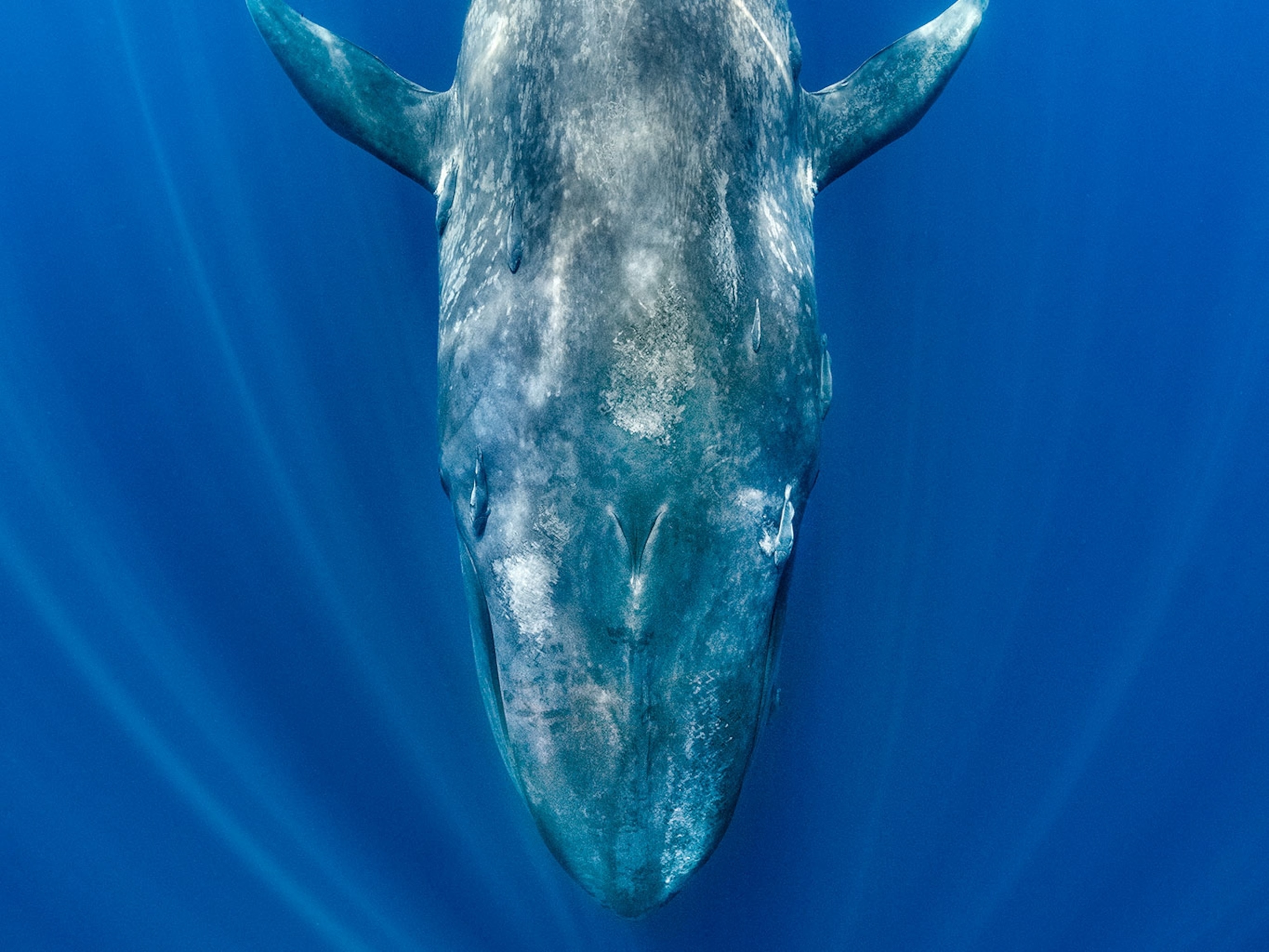Surprise: Blue Whales Are Mostly 'Left-Handed'
Scientists recently got an unprecedented look into the ocean giants' underwater lives.
Even the largest animal that ever lived has rhythm—the blue whale performs acrobatic dives and twirls as it gobbles up microscopic krill by the millions.
But a new study adds a surprising new detail to the marine mammals' underwater ballet: They don’t spin and turn at random. Instead, the 80-foot-long giants show a preference for either their right or left side—the equivalent of handedness in humans. (Watch a blue whale lunge for its dinner.)
Although blue whales mostly spend their lives below the surface, the majority of what we know about them comes from brief glimpses at the surface.
So study leader Ari Friedlaender, a marine biologist at the University of California, Santa Cruz and at Oregon State University, set out to change that. His first challenge: How to put a three-axis accelerometer—which records precise movements—on a 200-ton animal.
“It’s easy to get close to a whale,” says Friedlaender, who received funding from the National Geographic Society. “It’s hard to get close enough to put something on its back.”
Shake, Rattle, and Roll
Friedlaender and colleagues recently took a small, maneuverable boat to the Channel Islands National Marine Sanctuary off California, home to a large population of blue whales.
The team waited until a whale surfaced from a dive, then trailed the animal at a safe distance until its giant back broke the waves. Then Friedlaender zoomed forward and stuck on the accelerometer with a long pole. Using this method, the scientists managed to slap devices on 63 whales.
The resulting data revealed two major types of feeding behaviors that depend on ocean depth.
More than 200 feet below the surface, krill patches are dense, and the whales generally dive into their prey with a small roll to the right. Near the surface, where krill is less dense, the whales roll more than 180 degrees— presumably an additional movement to catch more food.
Unexpectedly, the accelerometers revealed the whales turned to the left much more frequently than to the right at these shallower depths.
Big and Brainy
Friedlaender believes that this preference can be explained by connections between the whale’s eyes and its brain.
As with most animals, a whale’s right eye is connected to the brain’s left hemisphere, and vice versa. Among other things, the left hemisphere controls practiced movements. The brain's preference for one side—like being right-handed in people—is called lateralization.
The whale’s eyes, however, are wide-set, not forward facing like us. So “If a whale is coming from below, and it turns to the left, its right eye will point upwards at its prey,” says Friedlaender, whose study was published November 20 in Current Biology.
He suggests the right eye’s connection to the left hemisphere gives the whale an advantage when lunging for krill. (Read how some tarantulas may be "right-handed.")
“These are not big animals mowing a lawn. They’re making decisions—they’re able to be flexible, and they need to be."
Taking Sides
Frank Fish, a marine biologist at West Chester University in Pennsylvania, says “the ability to get good quality data on these kinds of animals is pretty incredible."
“I have a lot of confidence in the data showing lateralization,” says Fish, who was not involved in the study.
Without detailed neurological studies, it’s impossible to say exactly how lateralization developed, he notes. But it’s becoming increasingly clear that humans are far from the only animals with a preference for the right or left side of the body.





